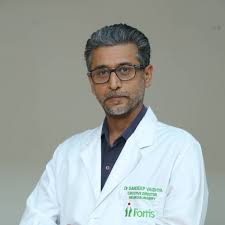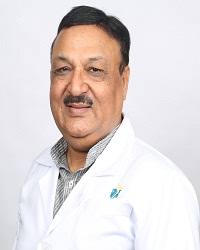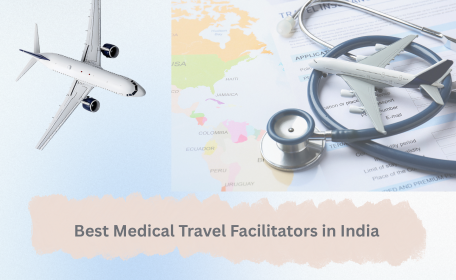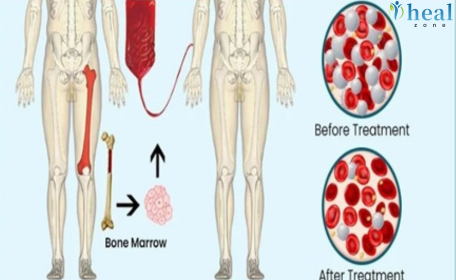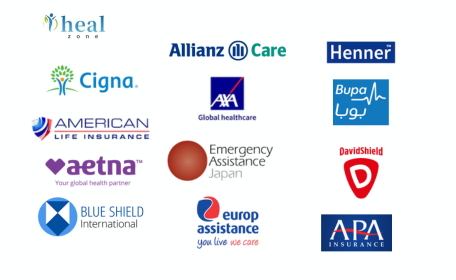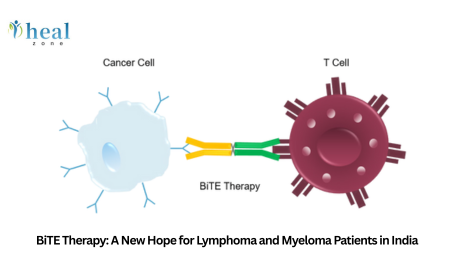What is Cervical Fusion and when is it needed?
Cervical fusion is a surgical procedure that permanently joins two or more vertebrae in the cervical spine (neck region). The goal is to eliminate movement between the affected vertebrae, which helps relieve pain, reduce nerve pressure, and restore spinal stability.
Indications for Cervical Fusion:
- Herniated cervical disc: When disc material presses on spinal nerves or the spinal cord
- Degenerative disc disease: Age-related wear-and-tear that causes chronic neck pain
- Cervical spondylosis: Arthritis of the neck that can lead to nerve compression
- Spinal instability or deformity: Due to trauma, tumors, or congenital abnormalities
- Fractures: Especially in trauma or accident cases where the vertebra is broken
- Failed previous cervical spine surgery: To correct or stabilize a prior fusion
By eliminating painful motion between vertebrae and relieving nerve compression, cervical fusion improves the patient’s quality of life significantly.
What are the different types or techniques of this treatment?
There are several approaches and techniques used for cervical fusion, and the choice depends on the patient’s condition, the spinal level involved, and the surgeon’s recommendation.
Main Types of Cervical Fusion:
- Anterior Cervical Discectomy and Fusion (ACDF):
The most common technique where the surgeon accesses the spine from the front of the neck. The damaged disc is removed, and the space is filled with a bone graft and a plate for fusion. - Posterior Cervical Fusion:
The surgeon approaches from the back of the neck. Often used when multiple levels are involved or when additional stabilization is needed. - Cervical Corpectomy with Fusion:
A part of the vertebral body is removed (corpectomy) and replaced with a graft or cage. Often used when compression extends beyond a single disc. - Minimally Invasive Techniques (MI Fusion):
Smaller incisions, less muscle damage, faster recovery. Not suitable for all cases but beneficial when applicable.
Graft Types Used:
- Autograft: Bone taken from the patient’s hip or spine
- Allograft: Donor bone
- Synthetic materials: Titanium or PEEK cages with bone growth enhancers
The best technique is decided based on MRI/CT findings, symptoms, and patient health profile.
What is the standard treatment protocol for international patients in India?
Cervical fusion surgery for international patients in India follows a clear and structured process designed for safety, comfort, and efficiency.
Typical Protocol Includes:
1. Pre-arrival Consultation:
Patients send MRI and medical reports to the Indian medical team. A surgeon reviews and confirms suitability for surgery, explains options, and shares a cost estimate.
2. Arrival & Initial Testing (Days 1–2):
Comprehensive evaluation including neurological exam, imaging (X-ray, MRI), blood work, and anesthetic clearance.
3. Surgical Procedure (Day 3 or 4):
Performed under general anesthesia. Duration ranges from 1 to 2.5 hours depending on technique and levels involved.
4. Hospital Stay (2–5 Days):
Patients are monitored for pain control, wound care, neurological function, and mobility. Physical therapy starts during the hospital stay.
5. Recovery Stay (7–10 Days Post-discharge):
Patients recover in a nearby hotel or guest house and attend follow-up visits, receive physiotherapy, and prepare for travel.
6. Discharge and Travel Home:
After final checkup, patients receive a discharge summary, medication instructions, and travel advice. Virtual follow-up is provided.
This protocol ensures that international patients receive high-quality care with minimal downtime and full support.
What kind of devices, implants, or surgical tools are used?
Cervical fusion involves precision tools and implants designed for spinal stability and bone growth. These are selected based on the chosen technique and patient anatomy.
Common Surgical Tools and Devices:
- Cervical Plates and Screws: To stabilize the fused vertebrae
- Interbody Cages: Made of titanium, PEEK, or carbon fiber; support the graft and maintain disc height
- Bone Grafts: Can be autografts, allografts, or synthetic bone substitutes
- Microsurgical Instruments: For accurate nerve decompression
- Intraoperative Imaging: C-arm fluoroscopy or navigation systems for precision
- Minimally Invasive Kits: For smaller incisions and tissue-sparing procedures
Indian hospitals use FDA- and CE-approved devices from global manufacturers. Implant quality is never compromised, even in budget-friendly packages.
What is the cost breakdown of Cervical Fusion in India?
Cervical fusion in India is significantly more affordable than in many developed countries, without compromising on medical quality or safety. Costs vary based on the number of levels fused, the approach used, and the implants involved.
Average Cost Range:
$4,500 to $8,000 USD
Typical Cost Breakdown:
- Surgeon’s Fee: $1,000 – $1,800
- Anesthesia & OT Charges: $700 – $1,200
- Implants (plates, screws, cages): $1,000 – $2,500
- Hospital Stay (2–5 days): $400 – $800
- Preoperative Diagnostics: $200 – $400
- Postoperative Medications & Physiotherapy: $200 – $400
- Travel & Stay Assistance (Optional): $200 – $600
Most Indian hospitals offer bundled packages for international patients. These include surgery, consultation, ICU if needed, stay, nursing care, routine labs, and discharge planning.
Why should international patients choose India for this treatment?
India has established itself as a global hub for spinal surgery, particularly for procedures like cervical fusion that require technical precision and post-op rehabilitation.
Reasons to Choose India:
- Globally Trained Spine Surgeons: Specialists with international fellowships and high-volume surgical experience.
- State-of-the-Art Hospitals: Equipped with intraoperative imaging, navigation systems, and robotic assistance where needed.
- Shorter Wait Times: Unlike countries with long queues for surgery, India offers immediate scheduling.
- Multilingual Patient Services: Interpreters and staff fluent in Arabic, French, Russian, Swahili, and more.
- Comprehensive Packages: Transparent, all-inclusive rates with no surprise charges.
- Medical Tourism Friendly Environment: Supportive visa policies, concierge services, and cultural sensitivity.
Patients receive personalized care, global standard surgery, and comfortable recovery—all at affordable prices.
Why choose Healzone for safe and stress-free treatment in India?
Healzone is a trusted medical tourism partner that ensures your cervical fusion journey in India is secure, organized, and comfortable from start to finish.
Why Healzone?
- Verified Hospitals & Surgeons: Partnered with internationally accredited facilities and certified spinal surgeons.
- Free Medical Review: Share your spine scans and reports to receive expert opinions before booking.
- All-Inclusive Planning: From visa and flight support to hotel booking and airport pickup, everything is arranged.
- No Hidden Costs: Detailed treatment plans with upfront pricing and transparent billing.
- Dedicated Case Manager: One point of contact throughout your treatment journey.
- Virtual Follow-up After Return: Continued support after you go home with online consultations and shared records.
Healzone removes the complexity from medical travel, allowing you to focus on healing while they handle everything else.
What is the recovery process and post-op care timeline?
Recovery after cervical fusion is gradual but predictable, with most patients experiencing significant relief from neck pain, numbness, or weakness within weeks. Full bone fusion typically occurs over several months, and the majority of international patients can return home 2–3 weeks after surgery.
Recovery Timeline:
Hospital Stay (2–5 Days):
Post-surgery, patients are monitored in the ward. Pain management, infection prevention, and early mobilization are priorities. A soft cervical collar may be provided for neck support.
Week 1–2 (Initial Recovery):
Pain and swelling decrease significantly. Patients begin light activities, follow medication instructions, and start gentle movements under supervision. Discharge usually happens within this time.
Week 3–6 (Functional Recovery):
Patients can resume non-strenuous work or travel. Stitches (if non-absorbable) are removed by Week 2. Daily walks and light exercises are encouraged.
Week 6–12 (Fusion Phase Begins):
Bone fusion begins internally. A follow-up X-ray or CT scan may be done to assess progress. Patients increase physical activity gradually and begin spine strengthening exercises.
After 3 Months:
Most patients regain full neck function and are allowed to lift light weights, drive, and perform moderate activities.
Postoperative Care Essentials:
- Follow a high-calcium diet to promote bone healing.
- Avoid bending, twisting, or sudden head movements in the first month.
- Refrain from smoking or alcohol, as both impair bone fusion.
- Attend follow-ups (either in India or virtually after return).
- Wear a collar if advised, especially during long travel or sleep.
- Sleep on a firm mattress with proper cervical support.
Hospitals and facilitators like Healzone offer customized recovery plans and physiotherapy to help patients resume normal life faster.
How should international patients prepare for this treatment in India?
Successful cervical fusion begins with effective planning. Healzone ensures patients arrive well-prepared for a safe and seamless treatment experience in India.
1. Pre-Arrival Medical Consultation:
- Share MRI, CT scan, and medical history.
- Receive a clear diagnosis and surgical recommendation.
- Understand the type of fusion and expected outcomes.
2. Travel Documentation:
- Apply for a medical visa with support from the Indian hospital.
- Prepare passport copies, prescriptions, past records, and medical summaries.
- Plan at least a 3-week stay in India for surgery and early recovery.
3. What to Pack:
- Comfortable clothing with front buttons (easy to wear post-surgery)
- Soft neck pillow for travel and recovery
- Medical and personal hygiene essentials
- Loose-fitting footwear and back support cushion
4. Accommodation and Financial Planning:
- Pre-book a hotel or guest house near the hospital.
- Ensure coverage of expenses (some pay in advance via wire transfer or international cards).
- Carry contact details of your care coordinator for assistance on arrival.
5. Physical & Mental Preparation:
- Stop smoking 2–3 weeks prior to surgery.
- Share any existing comorbidities (diabetes, heart disease, etc.) with the care team.
- Stay positive and informed about your procedure.
Show More

